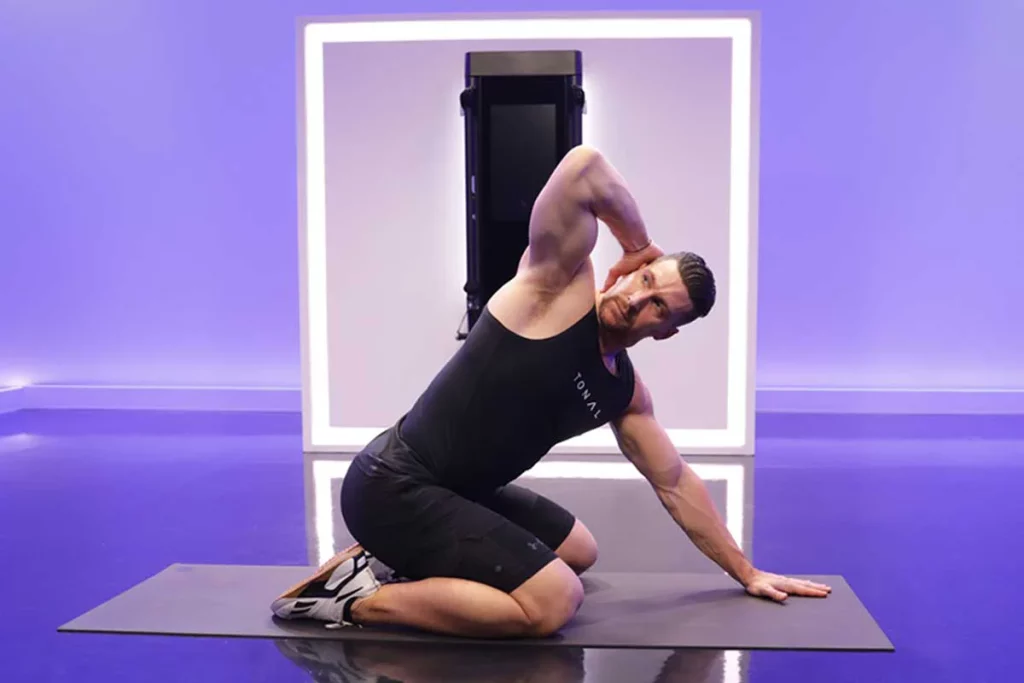Warm-ups are often seen as the appetizer before the main course of a workout—a few quick toe touches, a jog around the block, maybe some arm circles—and then it’s on to the “real” work. But what if your warm-up is doing more harm than good? What if the way you prepare your body for movement is actually increasing your risk of injury, decreasing your performance, and setting you up for fatigue rather than strength? The truth is, not all warm-ups are created equal, and many exercisers—whether beginners or seasoned athletes—still make the mistake of sticking to outdated routines. Worse yet, some skip the warm-up entirely or confuse stretching with activation. In this deep dive, we’ll uncover the science behind effective warm-ups, debunk myths, and offer clear, practical advice to optimize both your pre- and post-exercise routines for performance, safety, and longevity.
The Purpose of a Warm-Up: It’s Not Just About Warming Up
The term “warm-up” might sound self-explanatory, but its real purpose goes far beyond just raising your body temperature. A proper warm-up is about preparing your body neurologically, physiologically, and psychologically for movement. When done correctly, it enhances blood flow to your muscles, increases joint lubrication, activates the nervous system, and primes your mind for focus. The idea is to gradually transition from a state of rest to a state of readiness, allowing your muscles and connective tissues to become more pliable, your heart rate to rise steadily, and your brain to engage the movement patterns required for the main workout.
Static Stretching Before Workouts: A Common but Risky Habit
One of the most common mistakes people make is using static stretching as a warm-up. Think bending down to touch your toes for 30 seconds or holding a quad stretch for a minute before running. While these stretches may feel good, they can actually decrease muscle power and performance, particularly in explosive or strength-based activities. Numerous studies have shown that prolonged static stretching before a workout can temporarily weaken muscles and reduce stability, making injuries more likely during your session. That doesn’t mean stretching is bad—it just means it belongs in a different part of your routine, namely the cool-down.
Dynamic Warm-Ups: The Gold Standard
Dynamic warm-ups, on the other hand, are movement-based stretches that prepare your body for the motions you’re about to perform. These include exercises like leg swings, hip circles, bodyweight squats, arm swings, and high knees. A well-structured dynamic warm-up will increase your range of motion, elevate your heart rate, and activate key muscle groups. Importantly, it mimics the specific demands of your upcoming workout. If you’re going for a run, your warm-up should focus on mobilizing your ankles, hips, and hamstrings. If you’re lifting weights, you’ll want to activate your glutes, shoulders, and core. The movements should flow gradually from low to moderate intensity, always with intention and form.
Components of an Effective Warm-Up Routine
A solid warm-up should take between 10 to 15 minutes and include the following components:
– General Cardiovascular Activation: Light aerobic activity to raise your core temperature and increase circulation—think jump rope, brisk walking, cycling, or a light jog.
– Joint Mobility Work: Controlled movements to lubricate joints and improve range—ankle circles, shoulder rolls, spinal twists.
– Dynamic Stretching: Moving stretches to prepare muscles for exertion—leg swings, arm circles, inchworms.
– Movement-Specific Activation: Low-intensity versions of your main exercises—bodyweight squats before loaded squats, slow lunges before running, push-ups before bench pressing.
– Neuromuscular Activation: Fast, light, and precise drills that wake up the nervous system—mini sprints, hops, light band work for glutes or shoulders.
Case Study: The Runner Who Skipped the Warm-Up
Take Sarah, a recreational runner who always began her runs with a few hamstring stretches before heading out the door. Despite consistent training, she suffered from tight hips and recurring shin splints. After consulting a physiotherapist, she changed her routine: five minutes of walking lunges, glute bridges, dynamic hamstring sweeps, and hip openers before each run. Within weeks, her pain diminished, her stride improved, and her mile time dropped. The secret wasn’t more running—it was smarter preparation.
Cooling Down: The Forgotten Recovery Ritual
If warm-ups prepare you to perform, cool-downs prepare you to recover. Skipping a cool-down is like slamming the brakes on a car from full speed—it shocks the system. A proper cool-down helps regulate blood flow, reduces muscle stiffness, aids in waste product removal, and triggers the parasympathetic nervous system to promote relaxation. It also provides the ideal time for static stretching when your muscles are warm and pliable. This post-exercise stretch helps improve flexibility, reduce delayed onset muscle soreness (DOMS), and ease tightness.
Ideal Cool-Down Elements
– Gradual Cardiovascular Reduction: Light walking or cycling to bring the heart rate down gradually.
– Breathing Exercises: Deep diaphragmatic breathing to activate the parasympathetic nervous system.
– Static Stretching: Hold each stretch for 20–40 seconds, focusing on the muscles you just used—hip flexors, hamstrings, quads, calves, shoulders, back.
– Foam Rolling: Use a foam roller to gently release fascia and reduce muscle tightness.

Post-Workout Nutrition and Hydration: The Invisible Cool-Down
While not always classified as part of the cool-down, refueling is critical for recovery. After a workout, your muscles are primed to absorb nutrients. Consuming a combination of protein and carbohydrates within 30–60 minutes post-exercise can accelerate muscle repair and replenish glycogen stores. Hydration is just as essential—rehydrate with water or an electrolyte drink, especially if your session involved heavy sweating.
Common Mistakes That Undermine Warm-Ups and Cool-Downs
– Rushing Through: A rushed warm-up doesn’t give your body enough time to adjust. Quality matters more than speed.
– Ignoring Specificity: A generic warm-up may not address the needs of your particular workout. Tailor it to your movements.
– Overstretching Cold Muscles: Save the deep static stretching for post-exercise when muscles are warm.
– Stopping Abruptly: Never go from high-intensity movement to complete rest. Ease out with gentle movement.
– Skipping It Entirely: The biggest mistake is treating warm-ups and cool-downs as optional. They’re foundational.
The Science Behind Temperature and Performance
Your muscles function better when they’re warm—literally. A study published in the Journal of Applied Physiology found that muscle temperature increases improve contraction speed, elasticity, and oxygen delivery. Conversely, starting a workout with cold, stiff muscles can increase the likelihood of strains and sprains. A warm-up elevates core temperature, but also enhances metabolic reactions and neural conduction. It primes your entire system—from brain to body—for optimal performance.
How to Adapt Your Routine Based on the Workout Type
– Strength Training: Emphasize joint mobility and neuromuscular activation, especially for shoulders, hips, and core.
– Cardio (Running, Cycling): Prioritize dynamic lower body movement and gradual cardiovascular ramp-up.
– HIIT or Plyometrics: Include explosive movements at low intensity to prep for speed and impact.
– Yoga or Pilates: Focus on breath, spinal mobility, and joint loosening rather than raising heart rate.
– Sports (e.g., Tennis, Basketball): Mimic game-specific movement patterns—lateral shuffles, jumps, quick footwork drills.
Listening to Your Body: The Intuitive Side of Preparation
Beyond checklists and routines, effective warm-ups and cool-downs require mindfulness. Notice how your body feels. Are your hamstrings tight today? Did yesterday’s lifting session leave your shoulders sore? Use your pre-workout time to assess and adjust. If you’re tired or under-recovered, extend the warm-up and ease into activity. Afterward, your cool-down should reflect how hard you worked—longer, gentler sessions after intense efforts.
Creating a Ritual: Make It Automatic
The key to consistency is turning warm-ups and cool-downs into rituals. Build a playlist, use a timer, or lay out your mat and foam roller before you even start. Treat these bookends not as chores but as self-care. When your body knows what’s coming, it adapts faster and more efficiently. Over time, the ritual becomes the signal—it’s time to move, it’s time to recover.
Conclusion: Train Smarter, Not Just Harder
Your warm-up and cool-down are not add-ons—they are integral parts of every workout. Done correctly, they can enhance performance, reduce injury risk, and accelerate recovery. Done poorly—or skipped altogether—they can sabotage your progress, no matter how hard you train. The next time you step into the gym, head out for a run, or roll out your mat, ask yourself: Is my warm-up helping me or holding me back? A few smart changes could be the key to your strongest, safest workouts yet.

















































